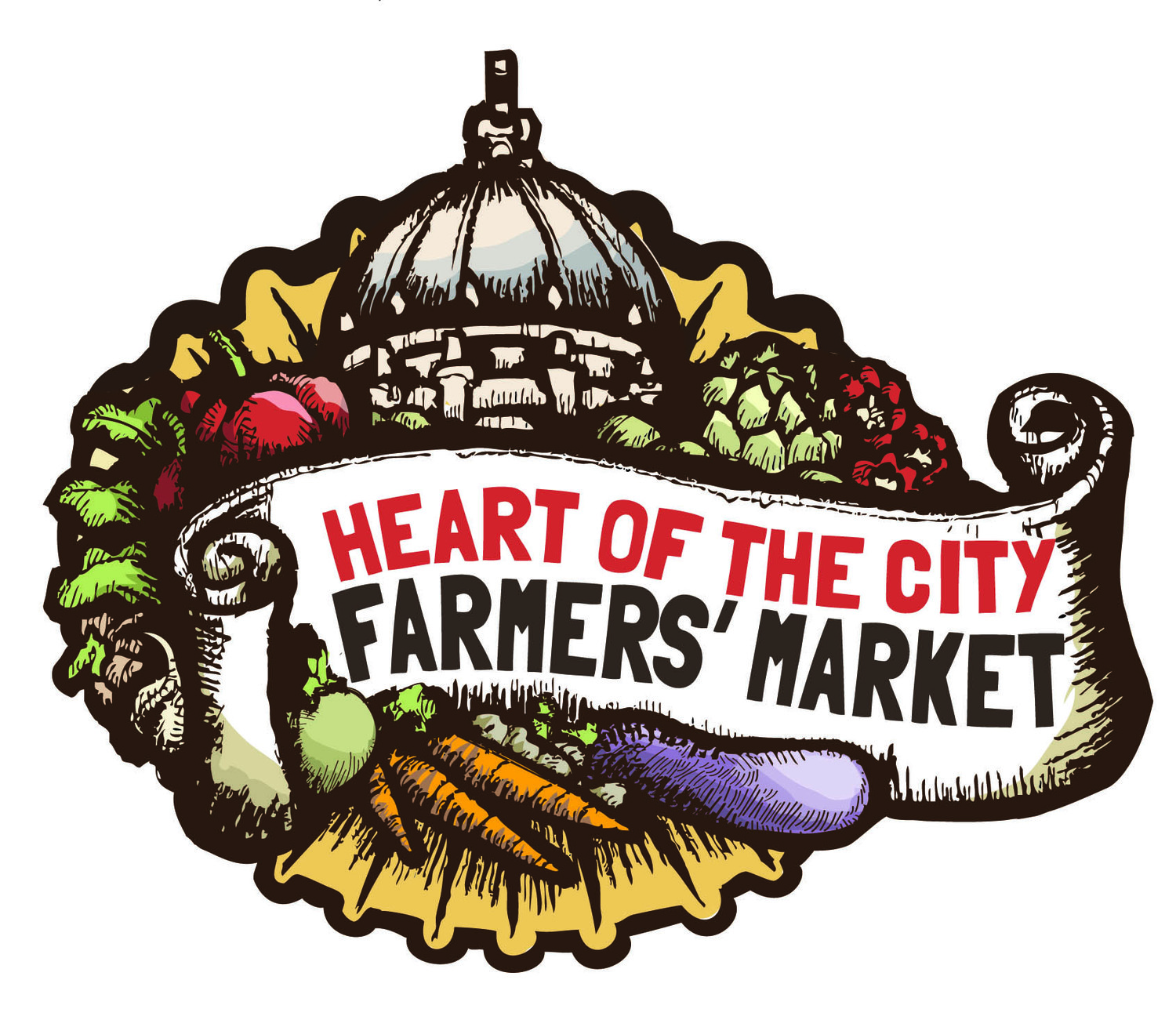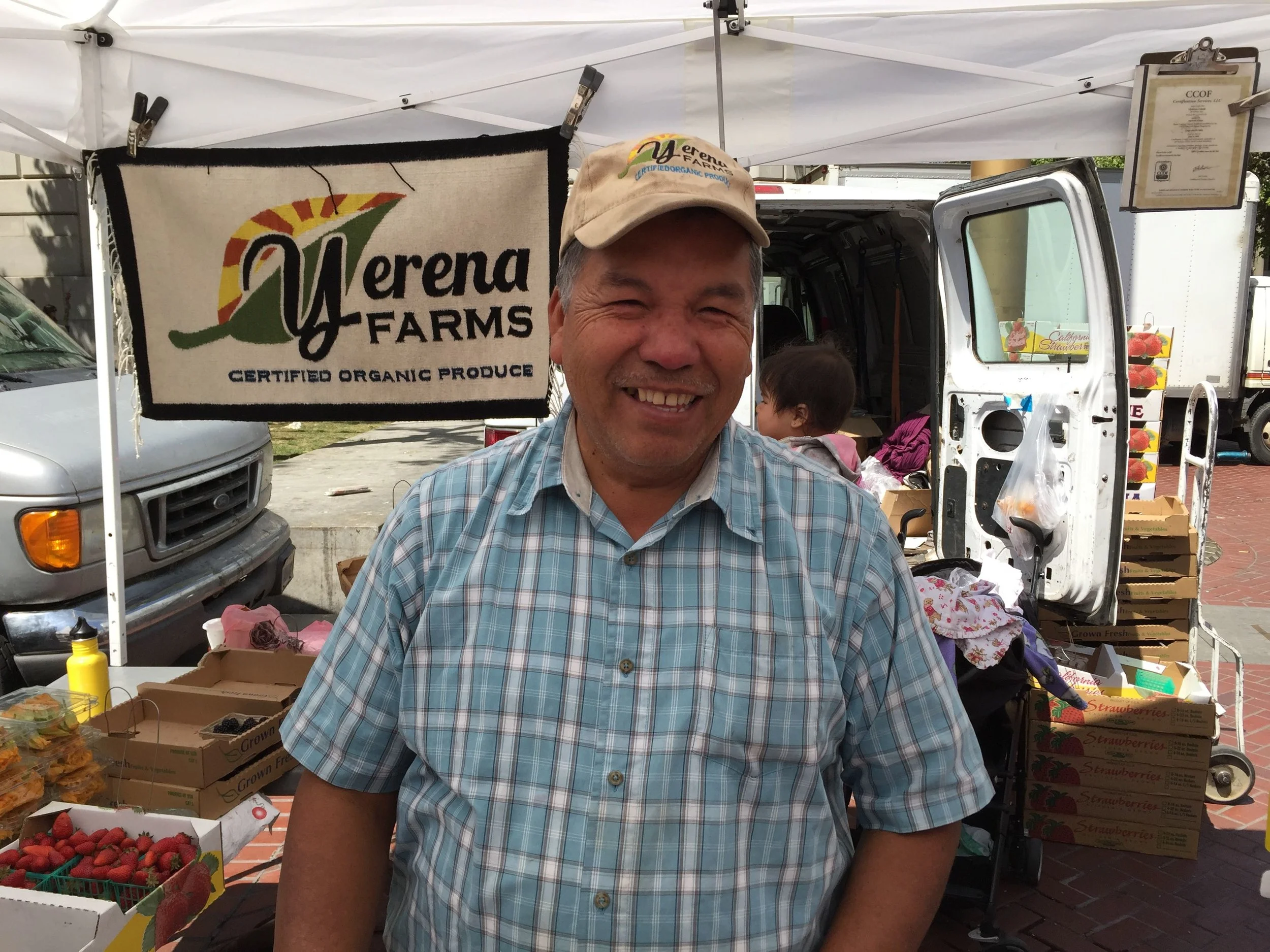$280,000 RAISED TO FEED FAMILIES IN
THE MOST EXPENSIVE CITY IN THE NATION
& SUPPORT FARMERS IN A DROUGHT
MARKET MATCH LAUNCH EVENT
With Supervisor Jane Kim
Wednesday, June 3 11am
Heart of the City Farmers Market has raised $280,000 to match customers’ EBT purchases with extra dollars to spend on fruits and vegetables, stretching limited food budgets in a city with the highest cost of living in the nation. Supervisor Jane Kim will join us to launch Heart of the City Farmers Market’s new Market Match program at 11am on June 3 by processing the first EBT purchase in the Tenderloin to be matched with funds she helped to raise.
Starting June 3, every purchase made at Heart of the City Farmers Market with an EBT card will be matched up to $7 to encourage CalFresh recipients to buy nutritious produce with their benefits and support small farmers during the worst drought in California’s history. When a customer spends up to $7 of their benefits at Heart of the City Farmers Market, they will be given up to $7 in extra market tokens to spend on fruits and vegetables as part of Ecology Center’s California Market Match Program.
"EBT customers can double their money every market day for the next two years," said Kate Creps, Executive Director of Heart of the City Farmers Market. "This will have a tremendous impact on food security in San Francisco’s poorest neighborhood."
Heart of the City Farmers Market is located in the Tenderloin, an extremely low-income neighborhood in San Francisco’s city center which lacks a supermarket and is dominated by liquor stores. San Francisco Food Security Task Force’s Assessment of Food Security in San Francisco 2013 reported that over 45% of the residents in District 6 (32,846 people) are at risk for food insecurity based on income.
Due to the need in this community, Heart of the City Farmers Market has the largest farmers market EBT program in California with over $250,000 in annual EBT sales.
“We see a critical need to promote strategies to afford and access healthy food in a community struggling to live at the center of the nation’s most expensive city,” said Kate. “Two thirds of all EBT benefits spent at San Francisco’s 25 farmers markets are spent here due to our unique focus on accessibility for people of all income levels.”
Heart of the City Farmers Market is San Francisco’s only independent, farmer operated, nonprofit farmers market and has accepted federal food assistance benefits as payment for produce since 1981. Customers visit the market information tent to swipe their EBT card and purchase tokens to shop at farm stands. Now, Market Match will double the impact of those CalFresh benefits.
The market also accepts WIC, Senior Farmers Market Nutrition Program, EatSF, and VeggieRX vouchers to help make healthy food affordable for San Francisco’s most vulnerable residents and donates over 1,000 pounds of produce each week for free distribution in the Tenderloin.
$280,000 Raised for EBT Customers to Purchase Produce from Farmers
The USDA’s Food Insecurity Nutrition Incentive Program, or FINI, was authorized through the 2014 Farm Bill to award $31.5 million to support programs that help increase the purchase of fruits and vegetables by participants in the Supplemental Nutrition Assistance Program (called CalFresh in California). FINI funds are awarded as a match to double funds already committed to the program. For more on the FINI awards, click here: USDA News Release
Five community partners pledged support for Heart of the City Farmers Market’s new Market Match program to bring FINI matching funds to the Tenderloin. A total of $280,000 in Market Match incentives will be distributed to Heart of the City Farmers Market’s EBT customers from June 2015 to April 2017.
Heart of the City Farmers Market pledged financial support to launch and administer the new incentive program, which was matched by USDA’s FINI program to generate $165,250 to give to customers as Market Match incentives.
On behalf of the Board of Supervisors, Supervisor Jane Kim pledged to continue to waive the United Nation Plaza’s site use fee for Heart of the City Farmers Market to support the Market Match program, which generated a $63,750 match to provide to this community. She will process the first Market Match transaction to distribute the funds that she helped to generate.
“Supervisor Kim’s support has resulted in an extra $63,750 to give directly to residents in her district to buy fruits and vegetables from farmers,” said Kate Creps, Executive Director of Heart of the City Farmers Market. “I can’t think of a better way to fight food insecurity, promote health, and support local farming here in our community.”
Three generous community partners helped raise an additional $51,000 to give away as Market Match incentives:
Kaiser Permanente donated $20,000 to provide incentives for Heart of the City Farmers Market’s EBT customers, which was matched to make $40,000 available for our community.
Bi-Rite Market donated $6,000 to provide incentives for Heart of the City Farmers Market’s EBT customers, which was matched to make $12,000 available.
PES Environmental, Inc., a Bay Area-based environmental engineering firm, donated $2,500 to provide incentives, which was matched to make $5,000 available.
The Feeling Good Project of the SF Department of Public Health, funded by the USDA SNAP-Ed Program, is giving a free cookbook to every EBT customer who shops on June 3 to commemorate the Market Match launch.
Heart of the City Farmers Market Joins Ecology Center’s Statewide California Market Match Program
The Ecology Center in Berkeley, California, has been awarded a FINI grant of $3.7 million over two years, the 4th largest multi-year large-scale project in the country and 10% of all FINI funds. The grant will help to expand Market Match, California’s healthy food incentive program, to additional farmers’ markets and other outlets across the state. Through the grant, the statewide farm-to-fork incentive program expects to connect nearly 240,000 food-insecure shoppers with 2,200 of the state’s small farms, stimulating $9.8 million in fruit and vegetable sales.
“We’re thrilled with this vote of confidence from the USDA to expand a healthy foods program that’s steadily grown over the past five years, improving people’s food choices and increasing farmers’ sales,” said Martin Bourque, Executive Director of the 45-year-old Ecology Center.
Since the Ecology Center assumed the program in 2013, California Market Match has grown from 11 partners at 130 farmers’ markets to 30 partners at 234 outlets, including mobile markets, farm stands, Community Supported Agriculture outlets, and certified farmers’ markets from across the state. Heart of the City Farmers Market has joined as a new partner for 2015 to distribute $280,000 in incentives in two years.
Market Match is also helping local farmers. In a 2013 Market Match survey, 80% of farmers reported that they sold more fruits and vegetables, 69% had new customers and 66% made more money as a result of the Market Match program. 18% of farmers even reported that they were planting new acreage as a result of the program.
Heart of the City Farmers Market is San Francisco’s only independent, farmer operated, nonprofit farmers market located at the United Nations Plaza on Wednesdays and Sundays from 7-5pm. The market was created in 1981 to support and sustain California's small-scale growers, help make produce accessible for San Francisco's low-income Tenderloin neighborhood, and lead nutrition education outreach to create a healthy Heart of the City. For more information visit www.hotcfarmersmarket.org.
California Market Match was founded in 2009 by a nonprofit program of the Public Health Institute, Roots of Change (ROC). The Ecology Center and ROC continue to partner in order to further state-based programs and practices, including nutrition incentives, that work to ensure the health and resilience of all California communities. To learn more about the Ecology Center’s Market Match program, visit www.marketmatch.org and for more about the Ecology Center, visit www.ecologycenter.org.
Click here for a list of the Ecology Center’s California Market Match partners.













